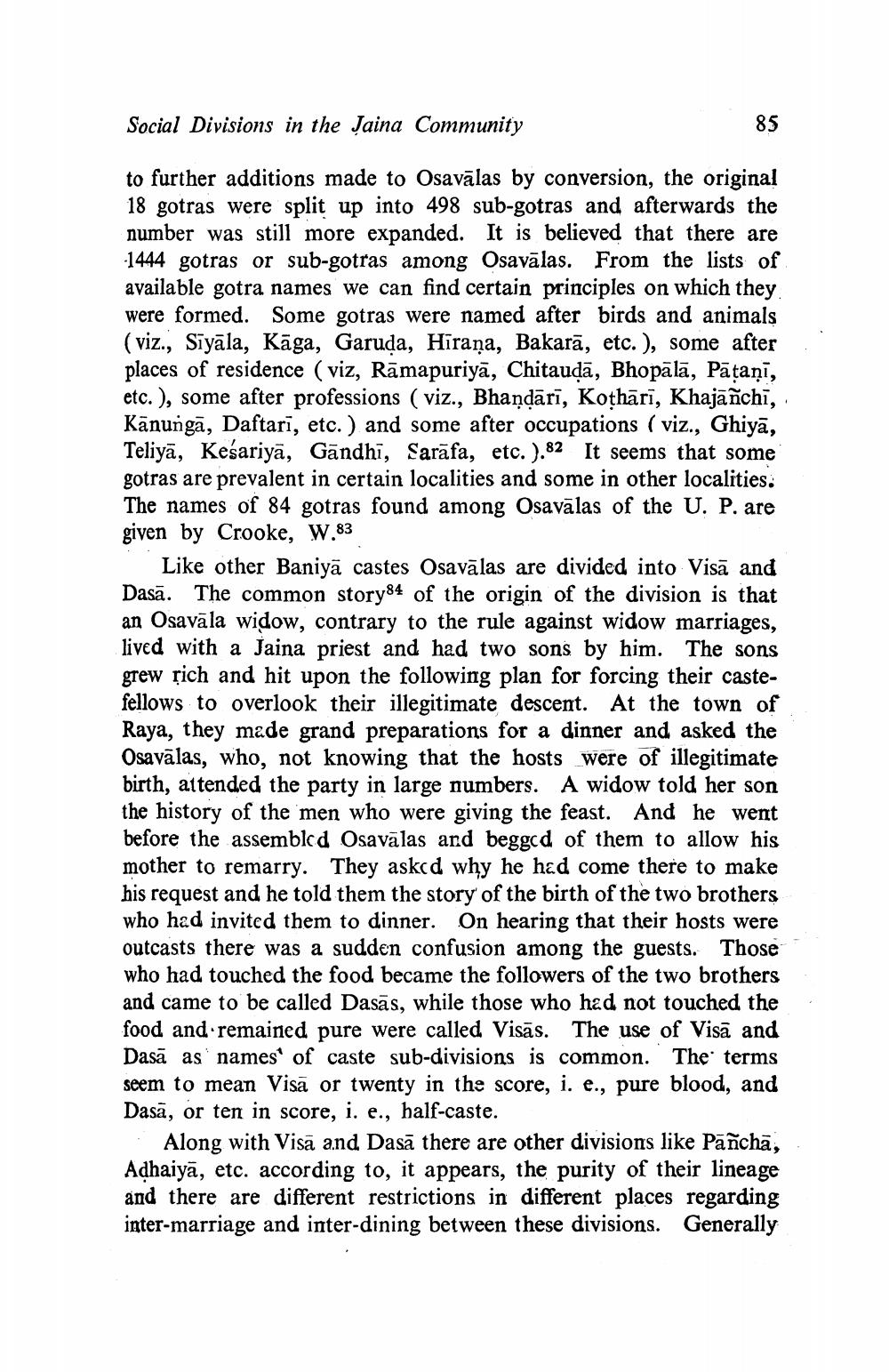________________
Social Divisions in the Jaina Community
X5
to further additions made to Osavālas by conversion, the original 18 gotras were split up into 498 sub-gotras and afterwards the number was still more expanded. It is believed that there are -1444 gotras or sub-gotras among Osavālas. From the lists of available gotra names we can find certain principles on which they were formed. Some gotras were named after birds and animals (viz., Sīyāla, Kāga, Garuda, Hirana, Bakarā, etc.), some after places of residence (viz, Rāmapuriyā, Chitaudā, Bhopālā, Pāțani, etc.), some after professions (viz., Bhandārī, Kothārī, Khajāñchi, Kānungā, Daftarī, etc.) and some after occupations ( viz., Ghiyā, Teliyā, Kesariyā, Gāndhī, Sarāfa, etc. ).82 It seems that some gotras are prevalent in certain localities and some in other localities. The names of 84 gotras found among Osavālas of the U. P. are given by Crooke, W.83
Like other Baniyā castes Osavālas are divided into Visā and Dasā. The common story84 of the origin of the division is that an Osavāla widow, contrary to the rule against widow marriages, lived with a Jaina priest and had two sons by him. The sons grew rich and hit upon the following plan for forcing their castefellows to overlook their illegitimate descent. At the town of Raya, they made grand preparations for a dinner and asked the Osavālas, who, not knowing that the hosts were of illegitimate birth, attended the party in large numbers. A widow told her son the history of the men who were giving the feast. And he went before the assembled Osavālas and beggcd of them to allow his mother to remarry. They askcd why he had come there to make his request and he told them the story of the birth of the two brothers who had invited them to dinner. On hearing that their hosts were outcasts there was a sudden confusion among the guests. Those who had touched the food became the followers of the two brothers and came to be called Dasās, while those who had not touched the food and remained pure were called Visās. The use of Visa and Dasā as names of caste sub-divisions is common. The terms seem to mean Visā or twenty in the score, i. e., pure blood, and Dasā, or ten in score, i. e., half-caste.
Along with Visa and Dasā there are other divisions like Pañchā, Adhaiyā, etc. according to, it appears, the purity of their lineage and there are different restrictions in different places regarding inter-marriage and inter-dining between these divisions. Generally




